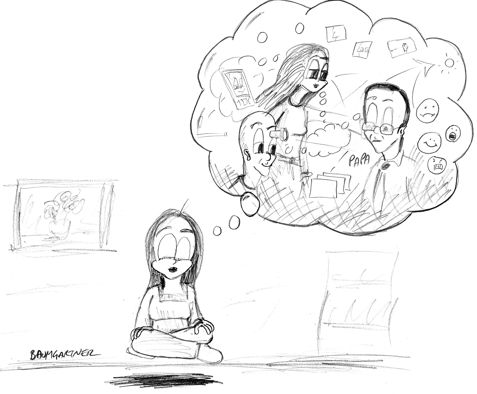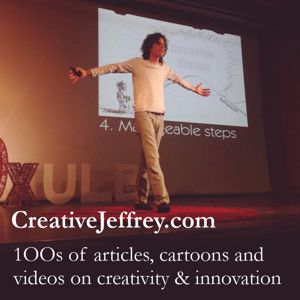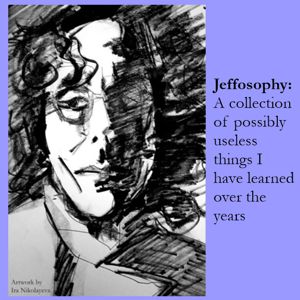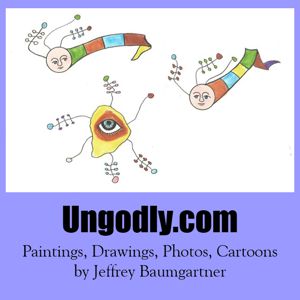Innovation by Visualisation
By Jeffrey Baumgartner
Business creativity tends to be very language based. Brainstorms, ideas campaigns, suggestion schemes all start with problem statements or creative challenges that invite people to respond with ideas. The challenges and ideas are all spoken or written. Most ideation software makes it easy to type a text idea, but not necessarily so easy to submit a non-text idea.
In part, this is because business tends to be very language based. Meetings are talk sessions possibly including Powerpoint slides full of bullet points. Reports are written. Emails are text. Nevertheless, thinking exclusively in words limits your creativity. This is why you should learn to visualise situations in which you want creative ideas.
For example, a manufacturer of snack foods (such as crisps - or 'potato chips' in US English) wants to come up with ideas for healthier seeming snack foods. This immediately evokes notions of reduced fat and salt; fruity flavours; more vitamins and minerals; and so on. These are the standard, conventional connections the mind makes when thinking about healthier snack foods. But the focus is entirely on words.
Don't Ideate in Words - Visualise Instead
When you are in a situation like this. Do not immediately try and formulate ideas in words. Instead, visualise the situation in your mind. Think about eating crisps -- or grab a package and eat some! What do you like about them? What do you dislike? Think about the flavours and textures and feelings associated with eating crisps. Imagine other people eating crisps: children, adults, teenagers. Visualise a mother buying snack foods in the supermarket for her family. What is she thinking? Imagine the shelves, full of various kinds of snack food products, that you typically find in a supermarket. Now visualise a father in the same situation. How does he feel? What is he thinking?
Now, imagine eating healthy snack foods like fruits -- or actually eat some. What does it taste like? How does it feel? Visualise people eating healthy foods. What are they eating? How do they feel?
Think about that mother and father in the supermarket. How does each feel about buying snack foods? How do they feel about buying fruits and vegetables. What if their children have joined them on the shopping trip. What appeals to those kids?
Visualise buying a bag of a mysterious snack food and opening it. Imagine that instead of crispy things, there are chewy things or soft things inside the bag. Imagine there are warm things or cold things. Imagine pyramids or spheres. Visualise each of those situations and how you feel about them.
Of course no one eats snack foods to be healthy, but people who like snack foods might buy healthier products if those products appeal. Visualise that. How can you make healthy snack food appealing? Make it taste like crunchy oil (a confession here, I am no fan of snack foods). That seems ridiculous. Make it taste fresh? But who wants crisps that taste like apples and oranges -- especially if they can buy the real things? Make it fun? That is a possibility. Imagine little crisps shaped like fruits. How about dried fruits in fun shapes?
By visualising not merely the challenges, but the situation that inspires the challenge, you open your mind to so many more possibilities than if you simply respond to the challenge. Indeed, in anticonventional thinking (ACT) you should visualise and play with the situation before formulating a sexy goal (as we call the challenge in ACT). But, if you are in a situation where you have been given a challenge and are expected to come up with ideas, you can still visualise the situation from various perspectives as we have done here.
Such visualization helps you understand the situation in much more depth and helps your mind form connections between the challenge and many other notions you have stored away in your memory. This, in turn, helps you build far more creative visions than if you think only about the words in the challenge and the immediate associations that come to mind.
Other Senses
Where relevant, do not limit yourself to seeing a situation. Think also about feel, smell, taste, other senses and even emotions. A lot of senses come into play in this example of a snack food. But senses are relevant in almost any situation. If you are planning any kind of new product, it is important to think about how it feels in the hands of a customer. If you are thinking about customer experiences, senses such as smell and emotions can be important. Learn to visualise all of these things.
You can and should even bring into play senses and emotions when they do not seem relevant. When working with clients to visualise situations, I often ask questions about senses that may not seem relevant, but help them think more creatively. Asking how a service smells can be very inspiring!
How to Do It
There are several approaches you can take to visualise situations. Here are a few.
-
If you are working alone, learn to put yourself into a meditative state and then visualise the situation. In my workshops, I help people get into a meditative state and lead them through visualisation exercises that are very powerful. But you can also find a relaxing space, probably not at your desk at work, where you can allow your mind to wander. Relax, focus on something in the distance -- or close your eyes -- and visualise the situation. Then, just let your mind wander to where ever it wants to go. Do not try to control it.
-
If you are leading a group and know how to lead a meditation exercise, give it a go. Once the group is meditating, talk them through the situation using visual, sensual language. Then leave them to play with the situation in their own minds.
-
Again with a group: talk your team through various visualisation exercises, asking questions and taking notes all the time. Be flexible, if someone says something unexpected, play with their ideas. For instance, in the snack food example above, imagine one of your colleagues talks about an edible toy car. Ask about it. What kind of car is it? Is it colourful? What does it taste like? What does a child think when she opens the package and sees the car inside.
-
Create role-plays -- for instance a family in the supermarket debating about which snack food product to buy; or a health conscious father in a supermarket is stopped by someone offering free samples of crisps.
-
Encourage people to submit non-verbal ideas. For example, pictures, models or even dances.
Visualise Don't Verbalise
To sum up, if you have a situation in which you need to come up with a creative idea, learn to visualise the situation. Imagine it and all the associated feelings. Play with it. And take notes as you do this. Visualising a situation before you start worrying about ideas enables you to understand the situation better and provides your mind with more information that it can use to construct ideas.
Promotional Message: Teach Your Team to Visualise Situations
Visualising a situation through meditation and questioning is a key part of the anticonventional thinking (ACT) process. It enables people not only to have better ideas in collaborative ideations sessions (such as ACT), but also gives them powerful problem solving skills that can be used in all kinds of situations.
Teach your team ACT with a focus on visualising -- it is a small investment in time for a massive pay-off in creativity and innovation!





